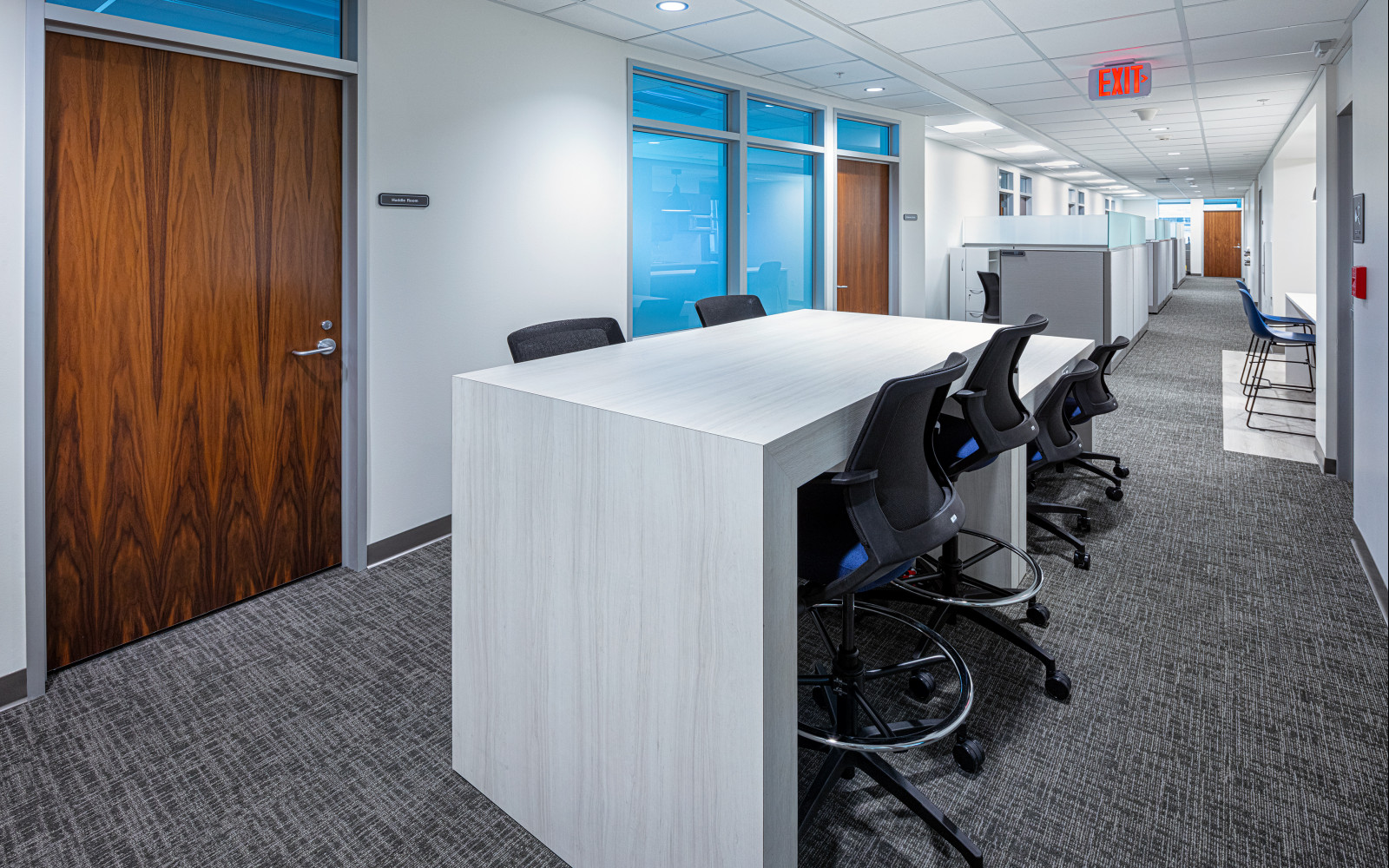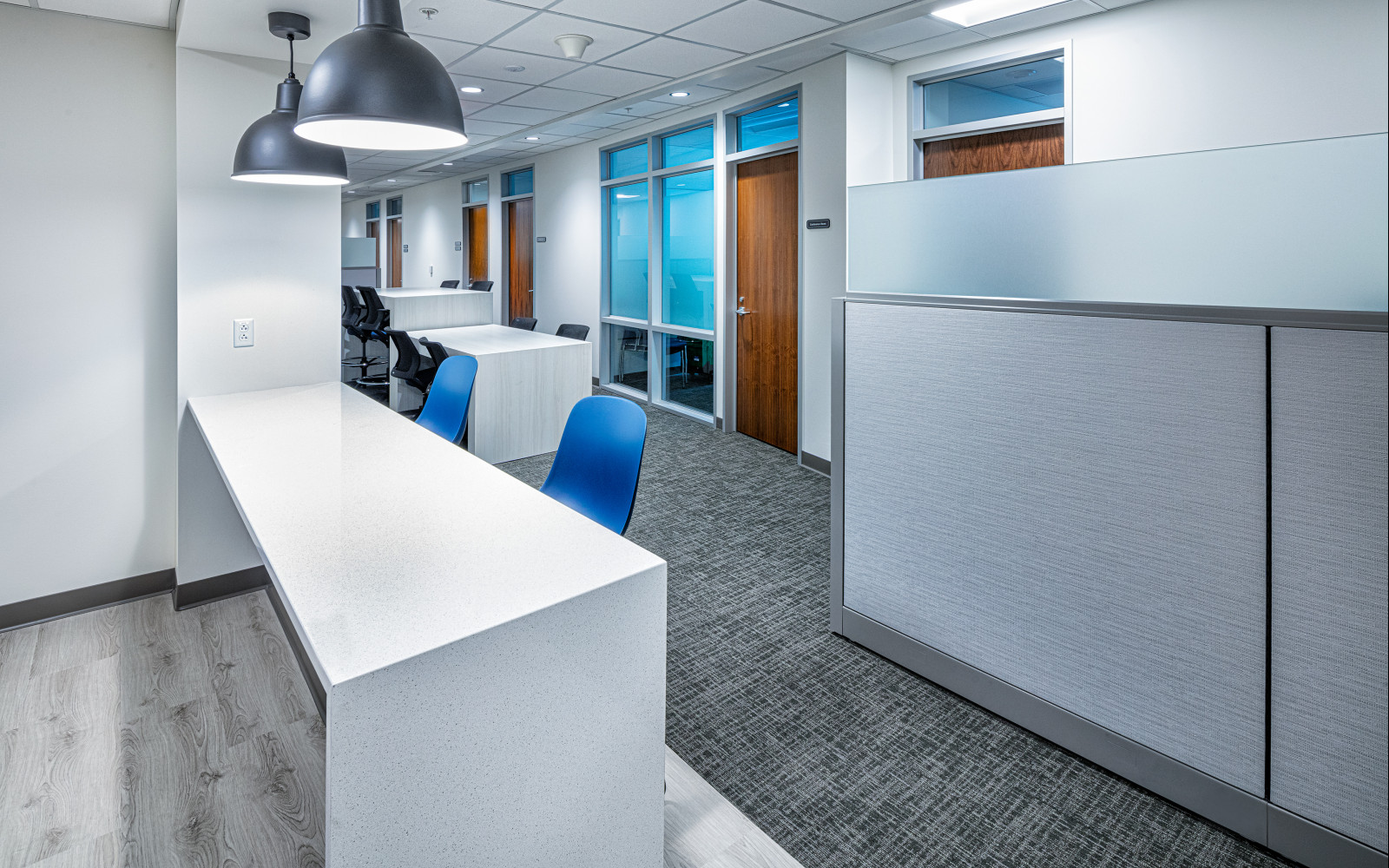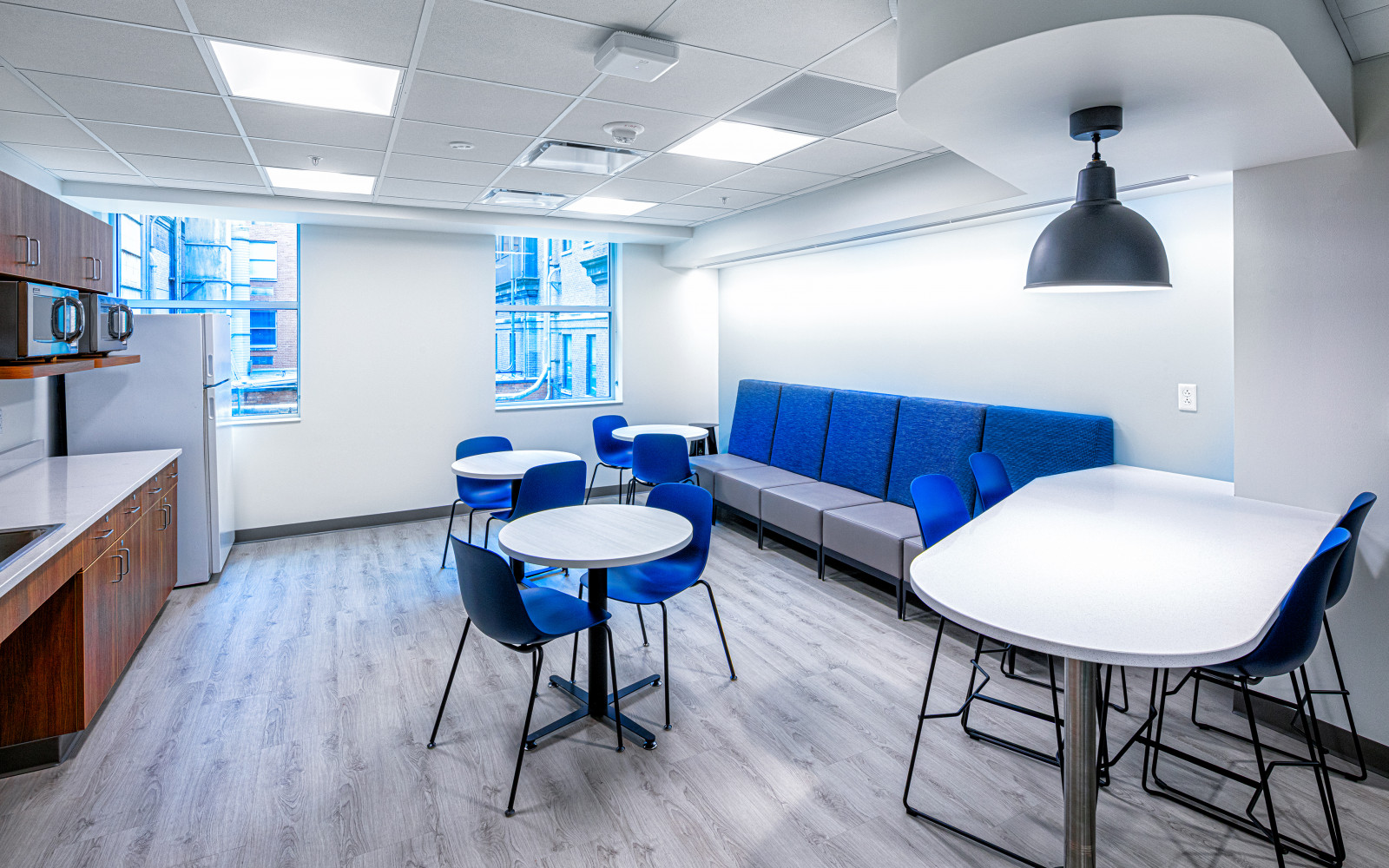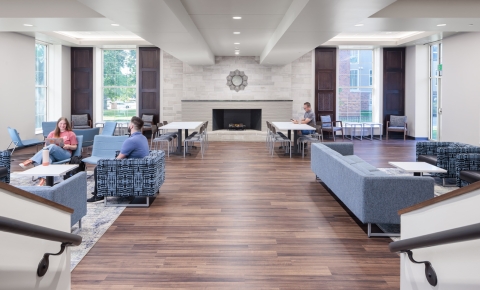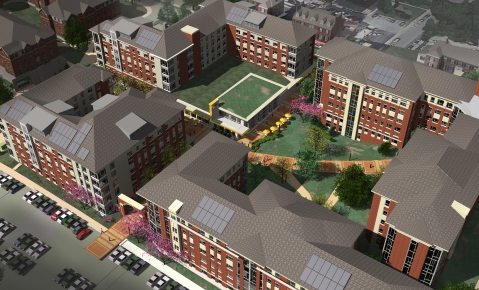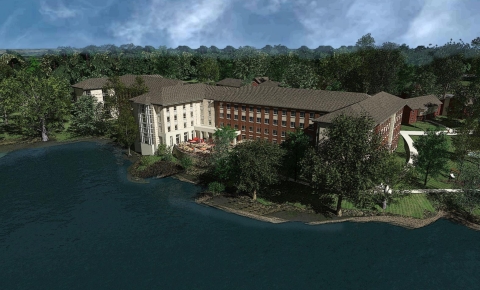KWK designed renovations to the second, third, and fourth floors of Renard Hospital on the Washington University School of Medicine campus in St. Louis. The renovated floors in the 1950s-era hospital now support the school's Department of Psychiatry's office and education needs.
"The renovation increased the quality and efficiency of the space to allow the department to bring together additional psychiatry faculty and staff from across campus to a central location. The move freed up space in the Taylor Avenue Building, which has been allocated for research and clinical use by the Department of Psychiatry," said Melissa Rockwell-Hopkins, Assistant Vice Chancellor of Operations and Facilities with the School of Medicine.
Renovations to the 18,000-square-foot space included improvements to the thermal envelope by adding insulation and new windows along with a vapor barrier. A new mechanical system was installed on the second floor to serve the new suites, which involved careful design in routing the ductwork throughout the building while increasing its overall height. The updated mechanical systems included new AHU/VAV units, new plumbing and waste lines, electrical panels, and dimmable LED lighting.
Each floor was designed with private faculty offices around the perimeter with support staff located in the central open office. Taller ceilings, glass transoms, and workstations with glass dividers provide an open workspace environment connected to the exterior and open on the interior without sacrificing privacy.
"The biggest challenge for our team was coordinating the new mechanical system in a building with very tight floor to floor heights to achieve the higher ceiling heights and enhance the daylighting," said KWK Project Manager Bob Buckman. "The finish materials were selected to give the project an updated look with durable materials that relate to the entry floor below."
The second floor features a flexible conference room which is subdivided with an operable acoustic partition. The partition can be easily opened to provide meeting space for up to 55 people to support the group's education mission.
The goal to increase the accessible daylighting to support wellness and production for the staff was a key driver of the design. At the core of each space are a central gathering area for lunch and breaks, flexible seating for touchdown work, and a central conference room near the entry to each floor.





